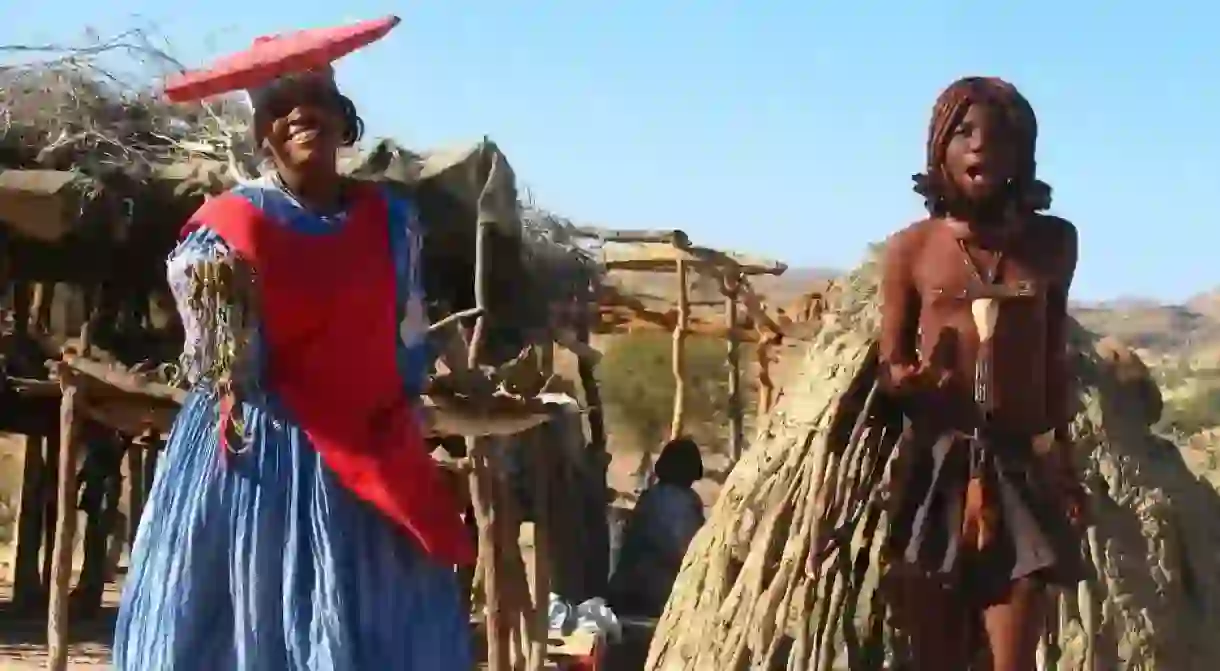An Introduction to Namibia's Herero People

The Ovaherero people (or simply Herero) are one of Namibia’s proudest tribes, taking pride in their culture and fiercely safeguarding it from outside influence. The traditional dress, the customary practices on marriage, the leadership structure and language are all important aspects of this colourful tribe. Here we provide a brief overview of Namibia’s Herero people.
Background
The Herero are said to have migrated southwards to Namibia from East and Central Africa, settling in northeast Namibia in the 1500s. Over the years, they moved further south and today, they have homesteads in various parts of Namibia, mostly the eastern, central and northeastern areas of the country. Some Hereros can even be found in Southern Angola. Consisting of various sub-tribes such as the Himba, Tjimba (Cimba), Mbanderu, and Kwandu, the Herero speak Otjiherero, with the various sub-tribes having their own dialects.
Leadership is distributed over eight royal houses with Paramount Chief, Advocate Vekuii Rukoro, overseeing the entire Ovaherero Traditional Authority.

History
A brutal history saw about 80% of the Herero people (up to 100,000) exterminated in a genocide carried out by the German colonial government between 1904 and 1908. While modern-day German governments have refused to call the killings a genocide, the Herero, alongside the Nama people of Namibia, have since taken up a case for reparations to be paid to them by the German government, a case that’s ongoing and where Germany is facing increased pressure to officially apologise for the atrocities and re-evaluate their current stance on reparations.
After the uprisings, many Hereros were dislocated to neighbouring Botswana. One thing that the Herero people kept from the German colonialists is the dress code which they cherish to this day. The now iconic Herero dress which is worn with a head scarf is an adaptation of the Victorian-styled dress of the German settlers. The men wear military styled suits decorated with badges in colours that denote which sub-tribe they belong to.

Traditional practices
While many of the cultural practices of the Herero are similar to those of other Bantu tribes in Namibia, the Herero follow some rituals that many other tribes have long stopped practising – the practice of otjiramue, for instance. This is where cousins get married to each other. Herero boys are required to be circumcised, while girls are groomed from an early age to become good wives to the men who’ll marry them in the future. Men are traditionally the head of the house and are afforded a lot of respect within the household and in the community. The Herero celebrate their culture through many festivals such as the recent otjikaika festival.
Cattle culture
The Herero are traditionally cattle-herding pastoralists who place great importance on the number of cattle owned by one person or household. Cattle are so important in this community that traditional dress is worn with a head scarf that is tied to resemble the horns of a cow. Even in dance, the Herero honour their precious cows. The outjina traditional dance (‘dance of the cow head’) which is performed at weddings sees women, and nowadays men, sing about and make observational notes on the dowry that is delivered as a bride price.













